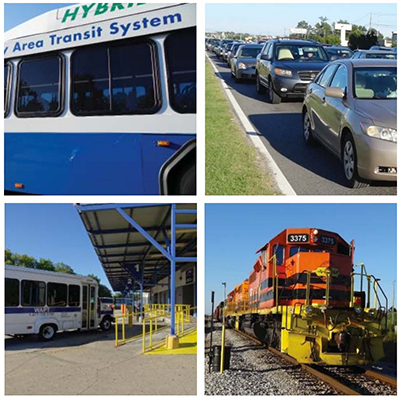CENTER FOR LEADERSHIP AND PUBLIC POLICY, ALABAMA STATE UNIVERSITY
Executive Summary
 Transportation funding in Alabama is at a critical stage. Many stakeholders and
Transportation funding in Alabama is at a critical stage. Many stakeholders and
policymakers involved in transportation planning – including professional planners, the
Alabama Department of Transportation (ALDOT), road and bridge builders, citizens’ groups,
and suppliers of transportation services and equipment – now realize that the traditional
methods of funding transportation infrastructure are becoming increasingly unsustainable
each year. Revenues are shrinking as prices (and demands on the system) are increasing.
The problem has many causes, including: (1) sharp increases in vehicles’ fuel efficiency,
resulting in reduced fuel tax revenue, (2) a growing transition away from gasoline to
alternative fuels, including electricity, (3) rising costs of infrastructure construction projects
and (4) lack of political will to raise gasoline taxes or seek alternative long-term revenue
sources for transportation infrastructure.
Further, demographic and economic changes are restructuring the nature of Alabama’s
transportation system. In the next two decades, the number of U.S. drivers over age 70 will
triple, posing the challenge of balancing safety concerns with those of personal liberty. A
system designed for single-passenger automobiles isolates many elderly and disabled
citizens, as well as other people unable to afford the ever-increasing costs of automobile
ownership and maintenance.
This report considers changes to our state’s transportation system, building on some
notable strengths and successes and guided by considerations of what Alabama needs to
do to yield maximum economic return. At the same time, this report envisions an Alabama
where all citizens have a chance to make a positive contribution.
Transportation infrastructure is widely recognized as an essential determinant of a
community’s economic development. Recent decades have seen a revolution in online
interconnectivity, yet Alabama’s physical infrastructure has failed to keep pace with the new
benefits of connectivity provided by virtual and digital spheres.
Transportation infrastructure is both the skeleton upon which an economy is built and the
bloodstream through which resources flow to serve all parts of the region. This report
examines what we know and do not know about Alabama’s transportation system, keeping
in mind the goal of developing a comprehensive transportation system as a primary driver
for economic development. In this sense, our vision of a comprehensive system involves
job creation in building and operating such a system, coupled with the development of more
attractive communities providing quality environments in which residents can “age in place.”
Such communities are those that people around the world seek out for working, raising
families and retiring within a life-enriching environment.
Alabama has some notable success stories of transportation investments yielding
tangible benefits for its citizens. These accomplishments are even more impressive
considering that Alabama is one of five states providing no state funding to complement
federal and local public transportation programs. However, Alabama also has some glaring
weaknesses that can greatly benefit from an improved approach to planning and funding,
guided by a persistent stakeholder community.
About the Center for Leadership and Public Policy
www.alasu.edu/academics/research–centers/center-for-leadership-and-public-policy/
The Center for Leadership and Public Policy works to improve the overall socioeconomic status of the citizens of Alabama and its neighbors by promoting greater cooperation and enhancing communication between academia and the community. The Center aggressively seeks opportunities to assist the private sector and government agencies in improving the lives of Alabama’s citizens.
Tags: AL, Alabama, Alabama State University, ALDOT, ASU, Center for Leadership and Public Policy, Montgomery






 RSS Feed
RSS Feed